Drone 'sprayed with venom' by Asian hornets at Jersey nest
- Published
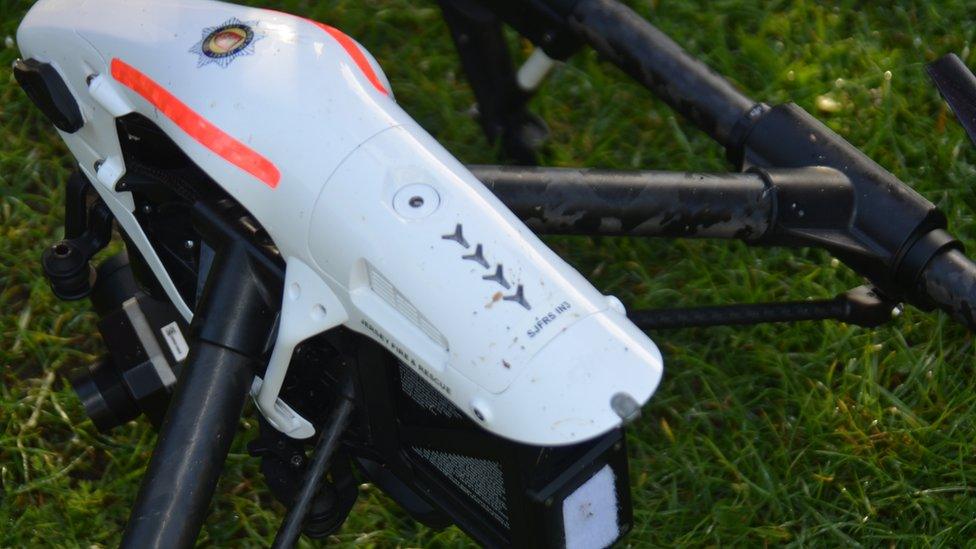
Venom from the hornets' stings was sprayed on the drone
A fire service drone was attacked by Asian hornets as it was sent to scout out a nest.
It happened as crews used infrared and high resolution cameras to take a closer look at it on behalf of Jersey's Department for the Environment.
Drawn by the sound of propellers, the hornets "swarmed out", spraying the drone with venom, operators said.
It was the first larger "secondary nest" found in the Channel Islands, thought to contain about 6,000 hornets.

The nest was hidden 60ft up a tree
The drone, operated by crews from Jersey Fire and Rescue Service, soared up into the canopy of trees near La Crete Quarry, St Martin, to do reconnaissance for pest control as they made plans to remove it.
Frank Raimbault, of Pestokill Environmental, said crews might come back and use chainsaws to get through the tree canopy, before putting a net over the nest and spraying it with pesticides.
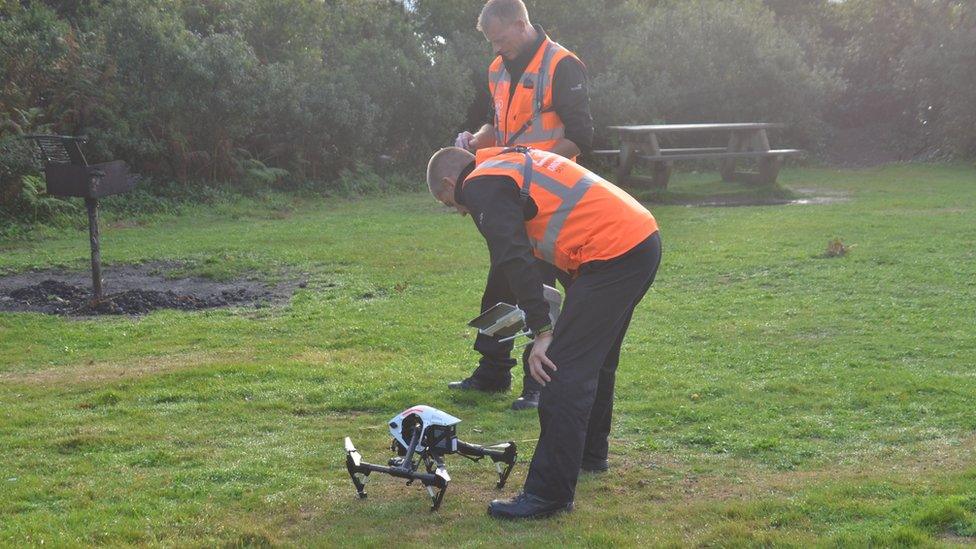
The drone is normally used for detecting hotspots and in missing person searches
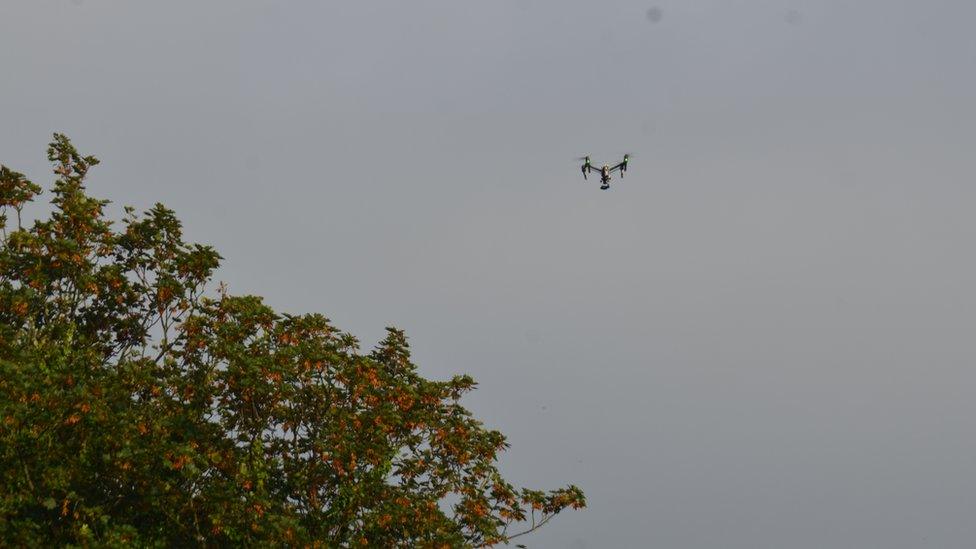
The drone came under attack as it approached the nest
Bob Hogge, of the Jersey Beekeepers Association, said: "It is vital that we get rid of the nest in the next few weeks before the queens emerge because there are about 200 queens in each nest and once they're out and mated they're lost to us. And if each one of those makes a nest like this one, very soon the island will be overrun."
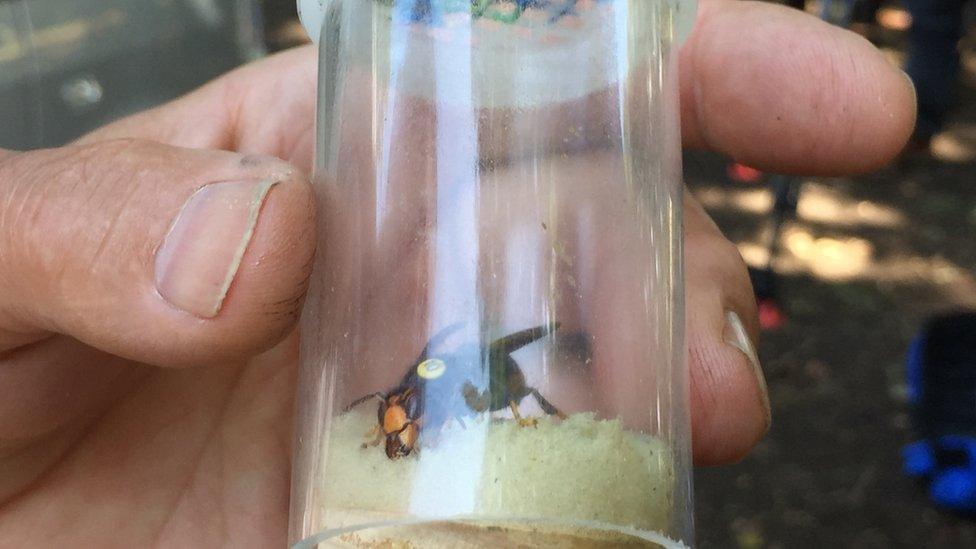
Asian hornets were marked in Jersey to track them
How do you find an Asian hornet's nest?
Mr Hogge said he and colleagues had been using a variety of techniques to track hornets around the island for the past five weeks.
They marked hornets and measured how long it took them to fly between their nest and specialised bait they had put down to find the nest.
When the beekeepers thought they had closed the distance between themselves and a nest, they called the Department for the Environment, which helped them find it.

A smaller primary nest, found in Jersey in July
He said there could be as many as four other secondary nests on the island, formed after a queen creates enough drones in a smaller initial nest.
Tim Du Feu, of the Department for the Environment, said the hornets were an "environmental risk" to all the island's pollinators, including bees, dragonflies and wasps.
He has asked the public to report any sightings of nests, so they can be removed quickly.
Further nest searches are taking place in the St Brelade's area.

Asian hornet (Vespa velutina)
Queens up to 3cm (1.2in) in length; workers up to 25mm (1in)
Entirely dark brown or black velvety body, bordered with a fine yellow band
Only one band on the abdomen, fourth abdominal segment almost entirely yellow/orange
Legs brown with yellow ends
Head black with an orange-yellow face
Source: National Bee Unit

- Published6 July 2017
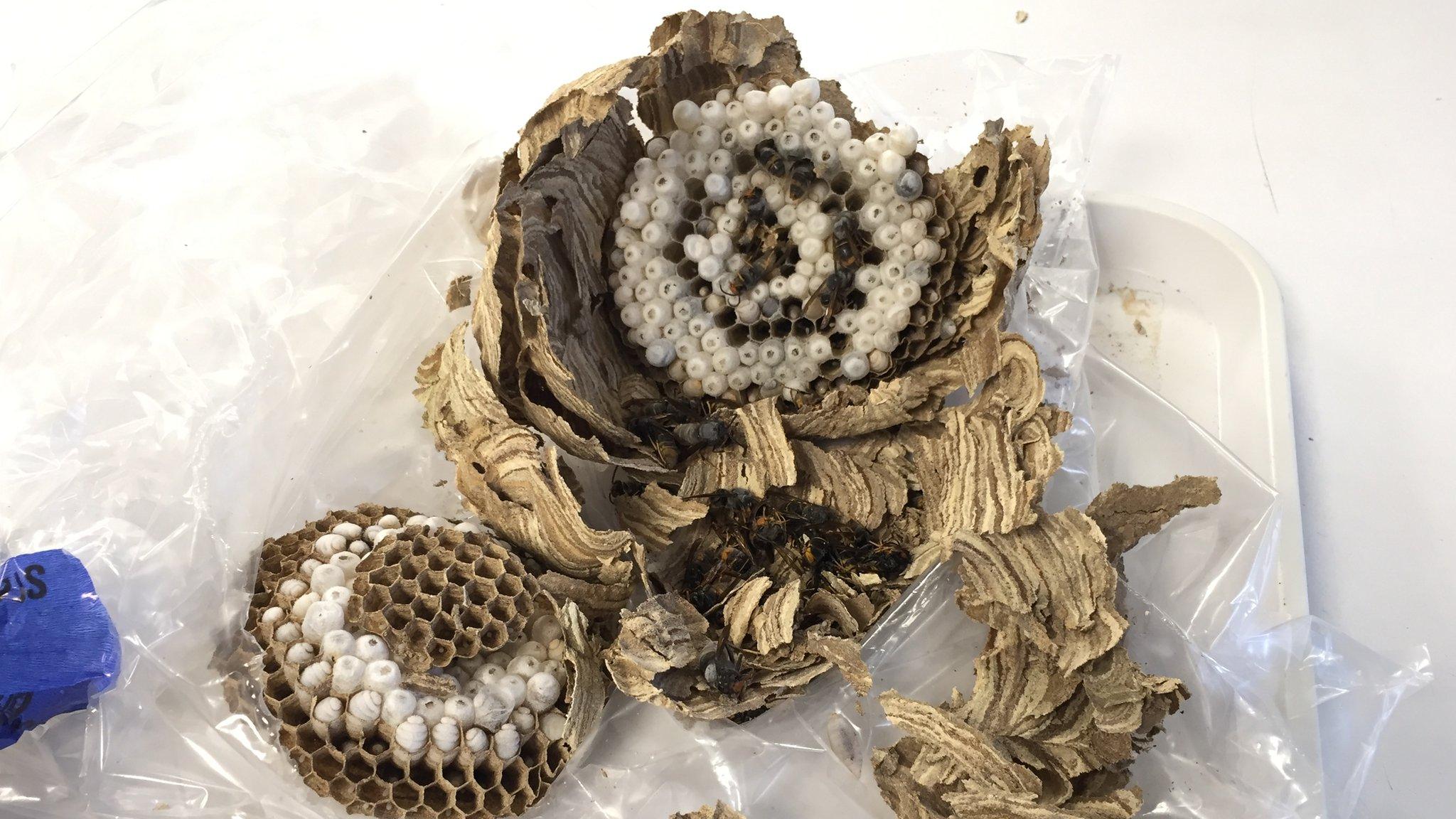
- Published17 August 2016
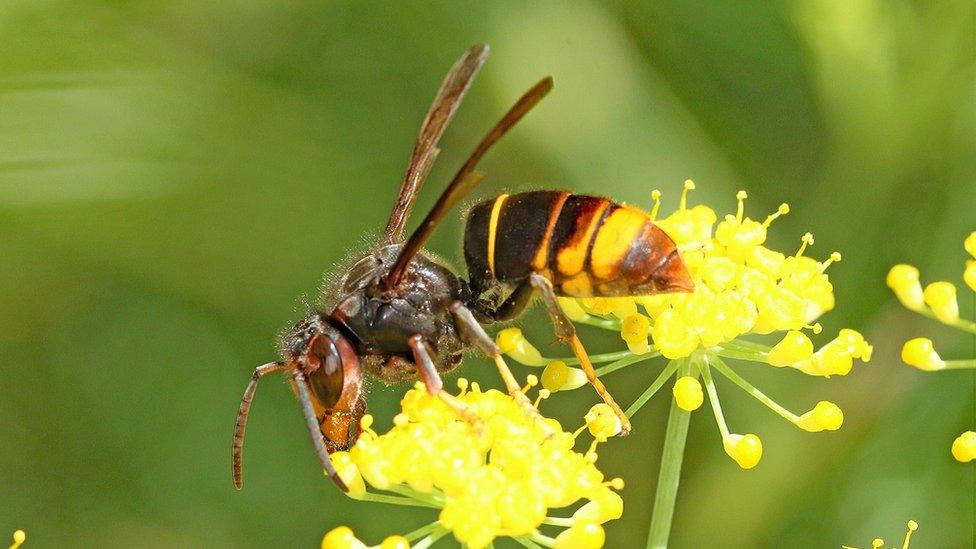
- Published21 July 2017
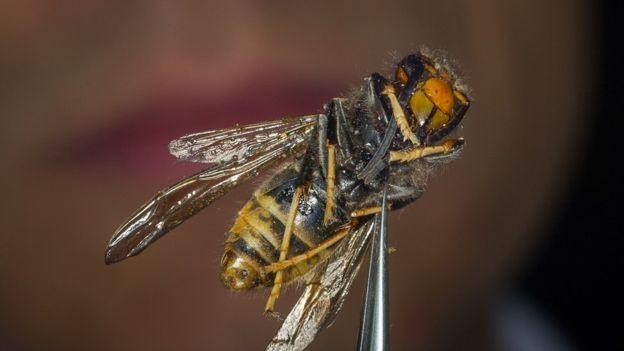
- Published22 July 2016
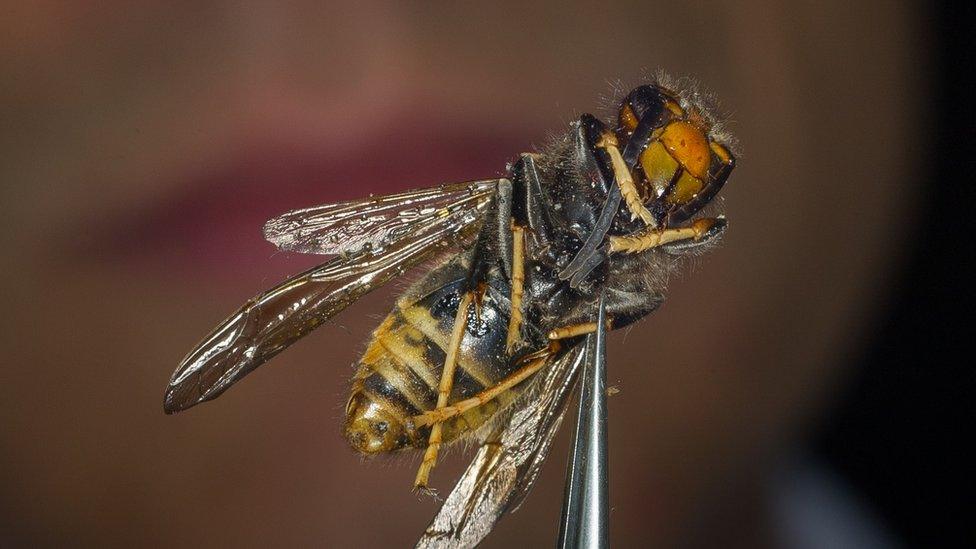
- Published14 July 2017
